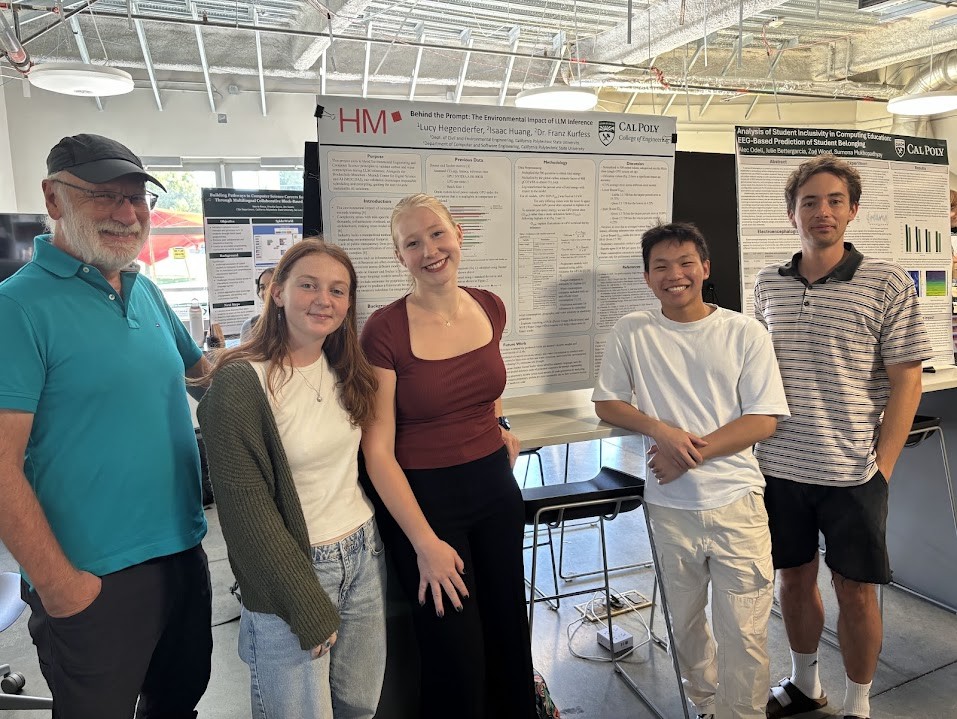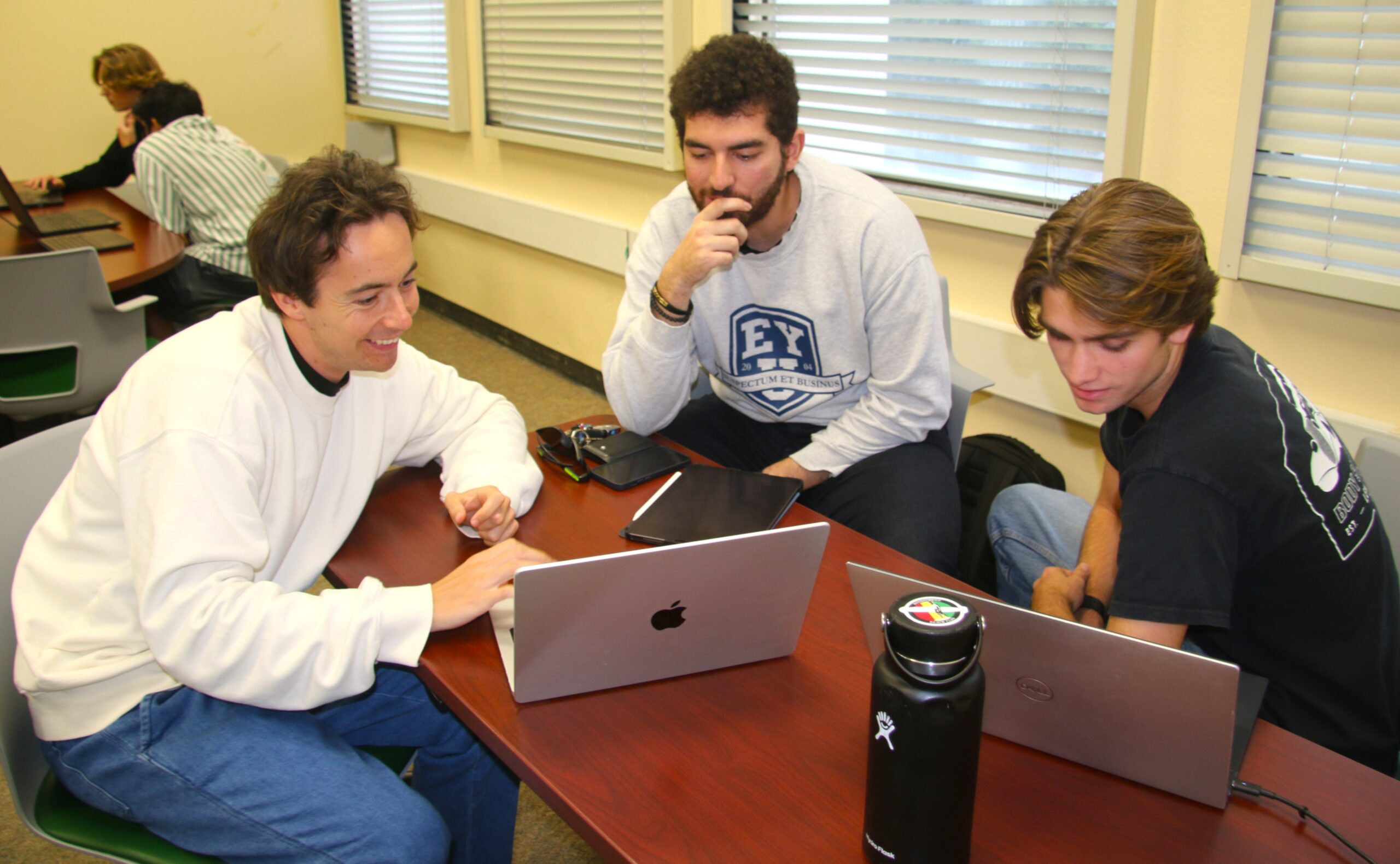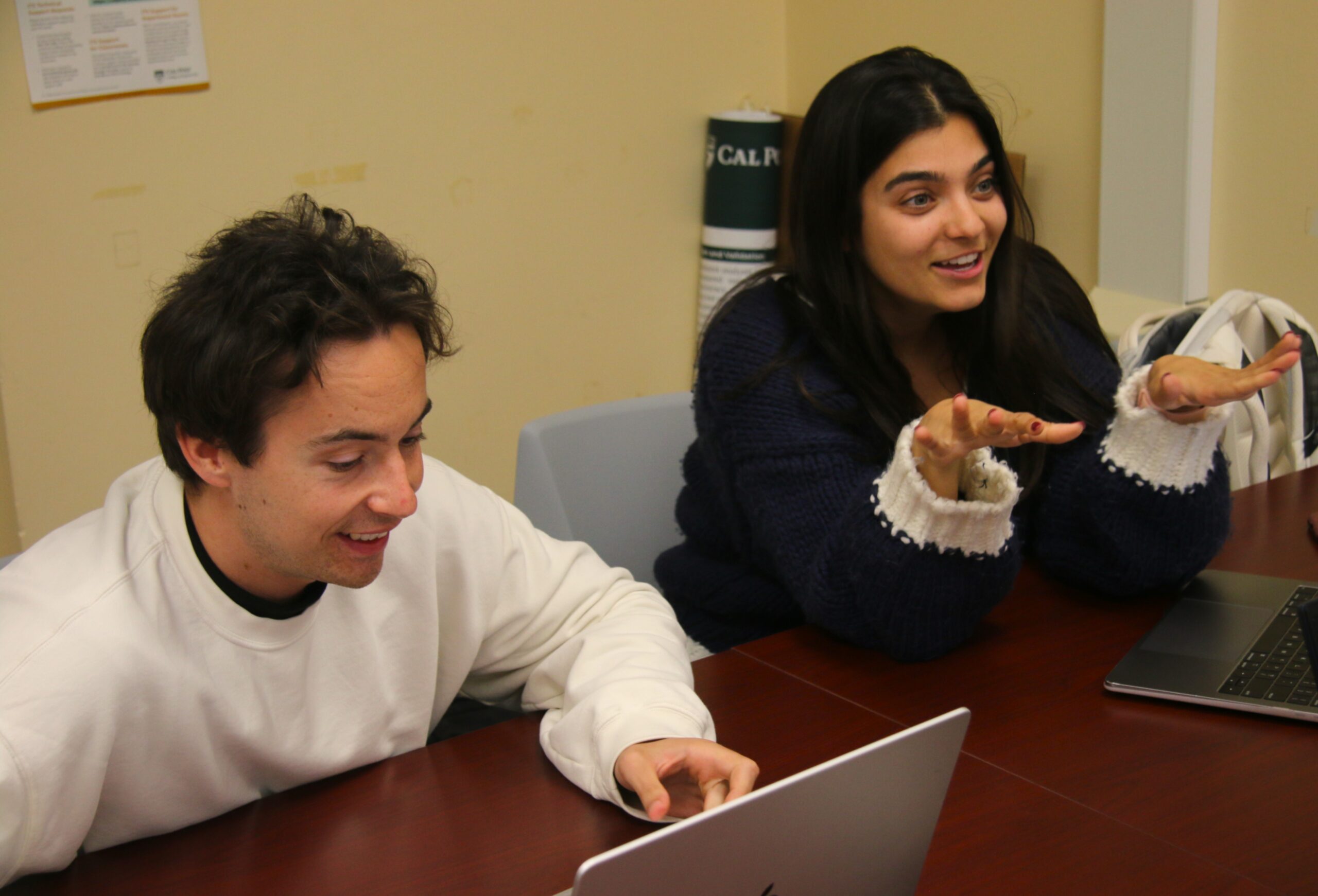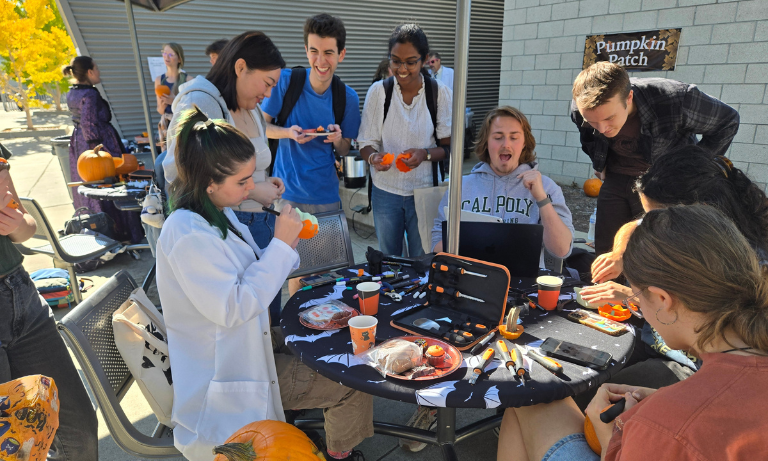When Maximilian Dauner arrived at Cal Poly in mid-September from Munich, Germany, the computer science office pulled him right in. Faculty stopped by to introduce themselves, and one afternoon a colleague even walked through with chocolate for the nearby offices. Students were just as welcoming, offering ideas for how to enjoy San Luis Obispo, from visiting the Downtown SLO Farmers’ Market to grabbing a tri-tip sandwich at Firestone.
With that kind of welcome, Dauner found a campus eager to collaborate. The visiting researcher from Munich University of Applied Sciences had come to work with computer science professor Franz Kurfess and a group of Cal Poly students on a timely question: how can artificial intelligence be used in ways that don’t waste energy or water?
The project is the latest step in a long-running exchange between Cal Poly and Munich University, which this year is focusing on the environmental side of AI, including large language models like ChatGPT.

A longtime partnership, now focused on AI
Cal Poly and Munich University typically exchange about 20 students a year. Over time, the exchange has grown into a broader partnership. Faculty and students now use it to take on projects they both care about, including how to make AI use fewer resources.
Computer science Professor Franz Kurfess helped launch this latest effort. He taught a course on agentic design in Munich last summer, and two Cal Poly students, Bella Boulais and Lucy Hegenderfer, spent the summer there working on the sustainable AI project. That initial collaboration, which also included a student team from the agentic design class, was followed by Dauner’s visit to Cal Poly, funded by the Bavaria California Technology Center (BaCaTeC).
Since arriving on campus, Dauner has joined Kurfess’ Introduction to Artificial Intelligence class and is working with student teams on projects that look at AI performance, energy use and how models are trained. He is also continuing the work that Boulais, Hegenderfer and Isaac Huang started in Munich over the summer. Boulais’ senior project examined emissions and water use from chatbots and proposed a way to validate those numbers, giving the group a baseline for what different AI tools actually consume.
For Dauner, that is the heart of “sustainable AI”: first understand what a model costs in electricity and cooling water, then see whether a smaller or better-trained model could deliver the same result. “We wanted to know, can we improve the sustainability of the models,” he said, “through more efficient training or better architectures.”
Next year, Dauner and Kurfess plan to co-teach a course during Munich’s Sustainability in Engineering summer school, continuing the work they began with students in San Luis Obispo.

Right-sizing AI
At the center of the project is a practical question: Do we always need the biggest possible AI model to answer everyday questions? Tools like ChatGPT run in large, efficient data centers, where thousands of similar requests can be processed together. The work isn’t happening on a student’s phone; it’s sent to a server, the model runs there and the answer comes back.
That leads to a surprise. Many people assume running AI on local machines is the greener option, but Dauner’s group found that isn’t always true. If the same task is done on smaller, unoptimized hardware, such as a university server, it can emit more than if it were handled in a professional data center. “The question is, do we always need those big models, or are smaller models good enough?” Dauner said. “Sometimes a smaller model is fine, but it has to run efficiently.”
For the team, sustainability means choosing the right tool and running it in a way that doesn’t waste energy or water. A smaller model is a good choice only if it’s on an efficient setup; otherwise, the benefit disappears. That’s why the group is looking at both sides: when a lightweight model is enough and how to make those lighter systems truly sustainable.

Two ways of talking about AI
Beyond the technical side, Dauner said this visit has shown him how differently people approach artificial intelligence. “In Germany, people talk more about the ethical side, should we use AI and what are the consequences,” he said. “Here in the U.S., people are more open to trying new tools like ChatGPT.”
At Cal Poly, students already have access to licenses and use AI in class projects, which made it easy for Dauner to test ideas and compare perspectives. He thinks both approaches have value: the German view keeps questions of impact and sustainability in focus, and the Cal Poly view encourages experimentation. “The mix of the two is important,” he said. “We don’t want to be overconcerned, but we have to think about the implications.”
That balance is what the exchange is meant to support, he said, and it will continue even after he leaves San Luis Obispo in mid-November. Dauner will return to Munich and keep working with Kurfess and the Cal Poly students from there. And when he comes back next year, he knows he’ll be returning to a campus that has already made room for him — in the lab and in the community that welcomed him in.
By Emily Slater



